Quarterly report (Jan-March) on anonymous sources in newspapers
South Asia Check / April 6, 2021
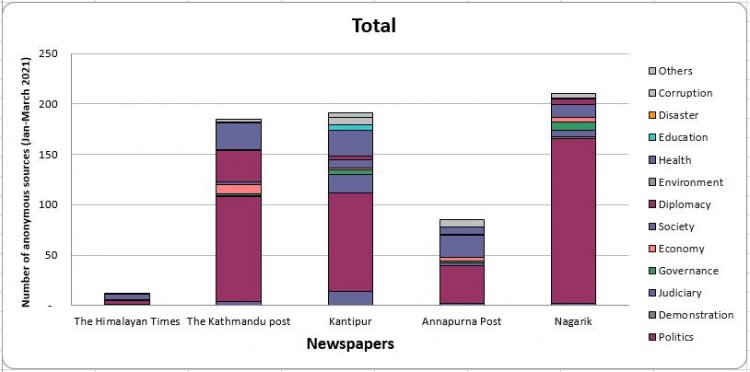
During the three months, between January 1 and March 31, 2021, among the five major national dailies that we have monitored, Nagarik used the most number of anonymous sources in its front page reports. It used anonymous sources in 210 instances in the front page reports during that period.
South Asia Check has, for the past several years, been tracking the use of anonymous sources in the news reports published on the front pages of six leading national dailies of Nepal – Kantipur, Nagarik, Annapurna Post, The Kathmandu Post, The Himalayan Times and Republica. But Republica remains out of print since mid-April last year, so this report is based on the five newspapers.
After Nagarik, the dailies using the most number of anonymous sources were Kantipur, The Kathmandu Post, Annapurna Post and The Himalayan Times, respectively. The Himalayan Times used the least number of anonymous sources (in 12 instances) during the period.
During the three months, the front page reports of the five dailies used anonymous sources in altogether 685 instances.
Most of the news reports on the front pages of the newspapers were about politics. Anonymous sources were mostly used in politics-related news reports (in 408 instances) during the period. Nagarik and The Kathmandu Post were the first and second national dailies respectively using the highest numbers of anonymous sources in their political reports; Nagarik used anonymous sources in 164 instances and The Kathmandu Post in 104 instances in such reports.
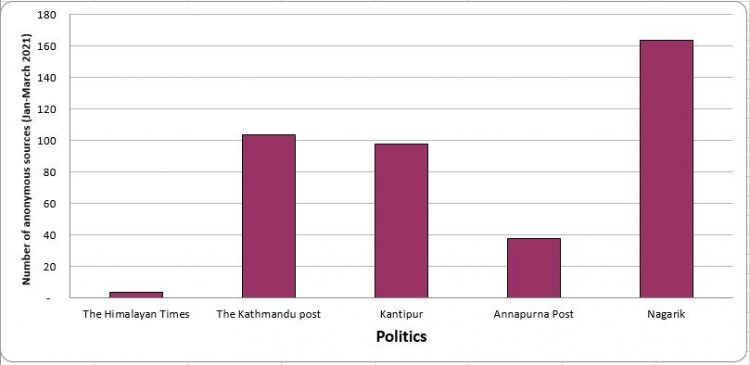
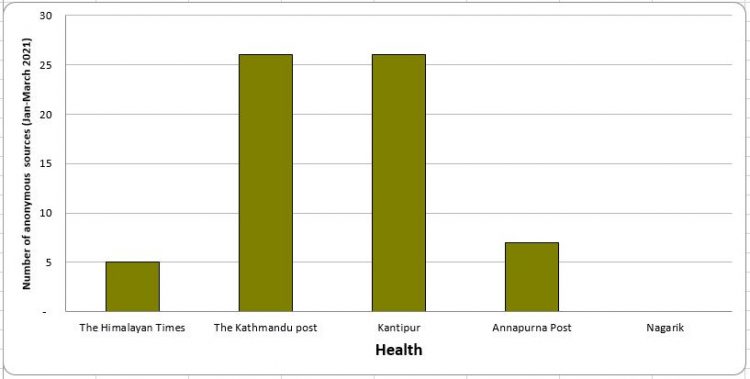
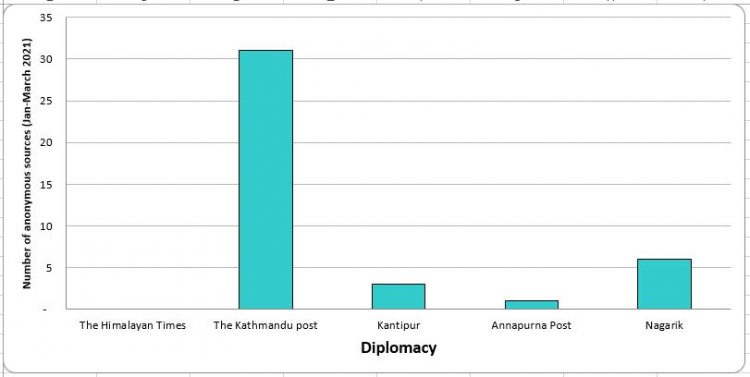
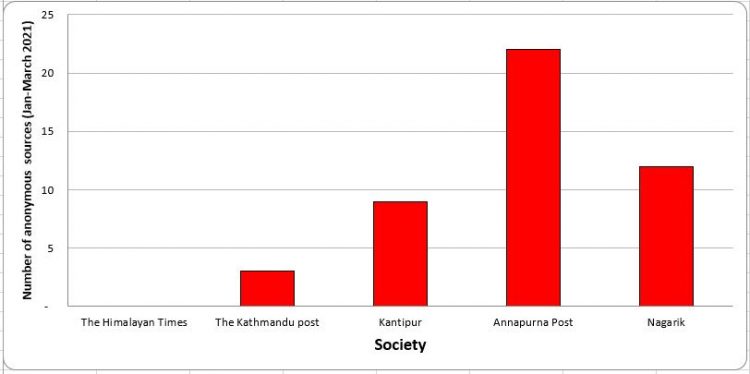
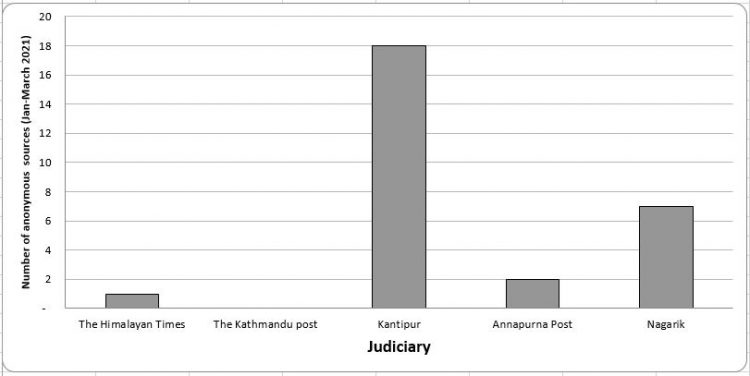
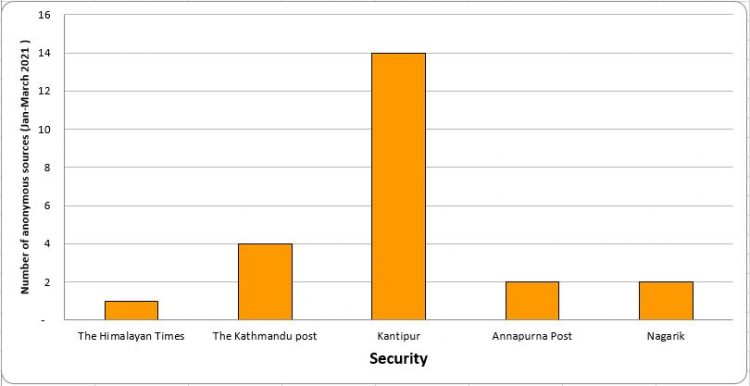
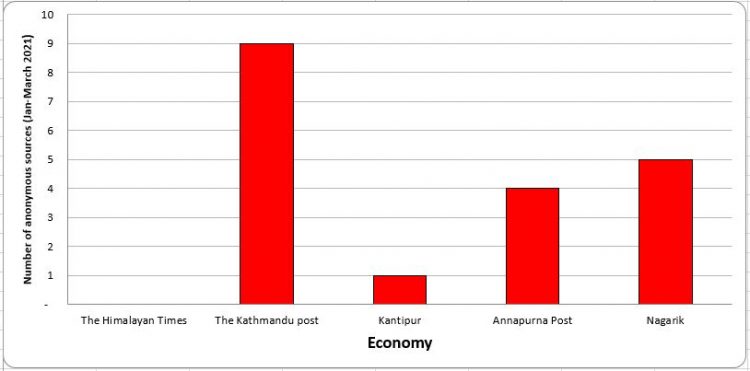

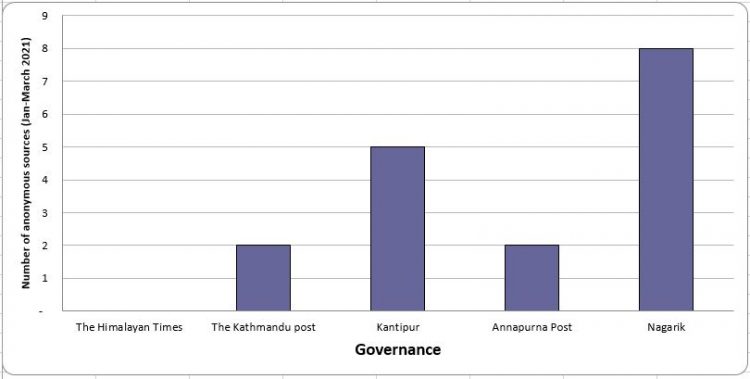
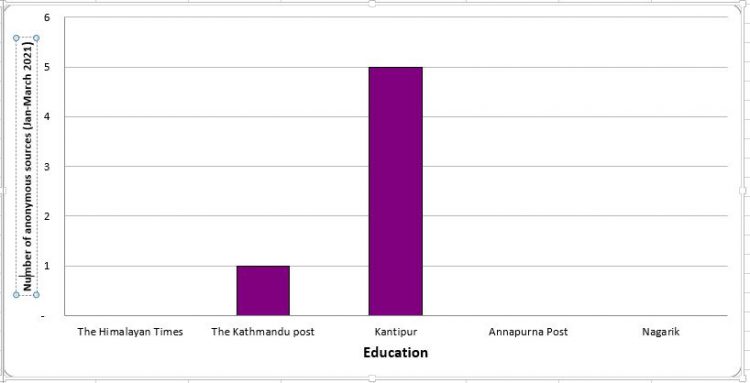
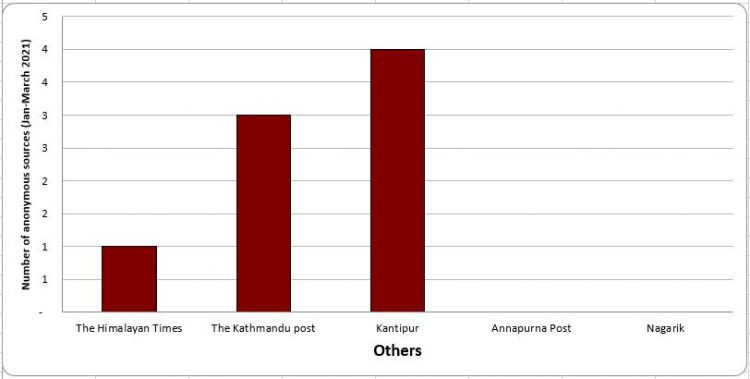
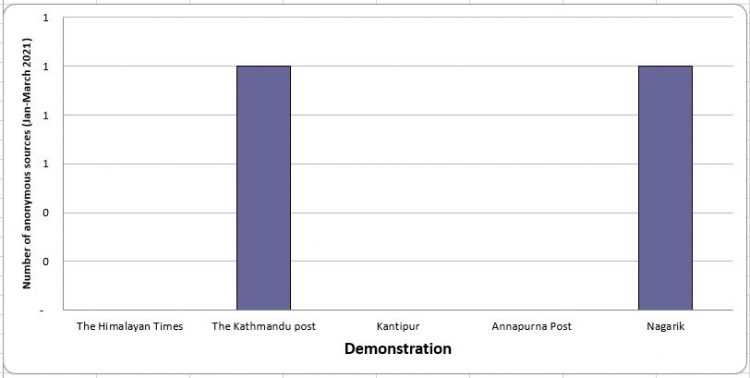
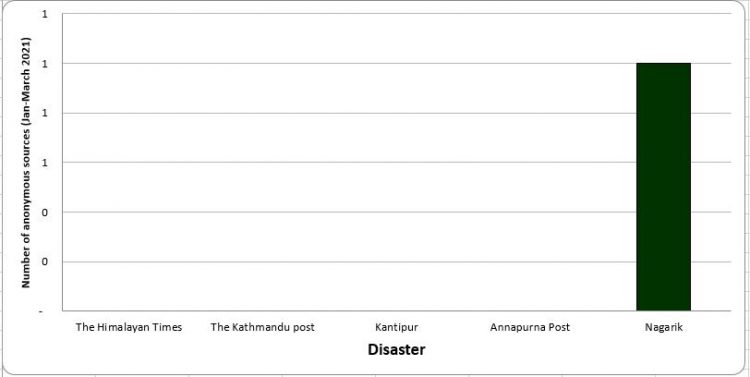
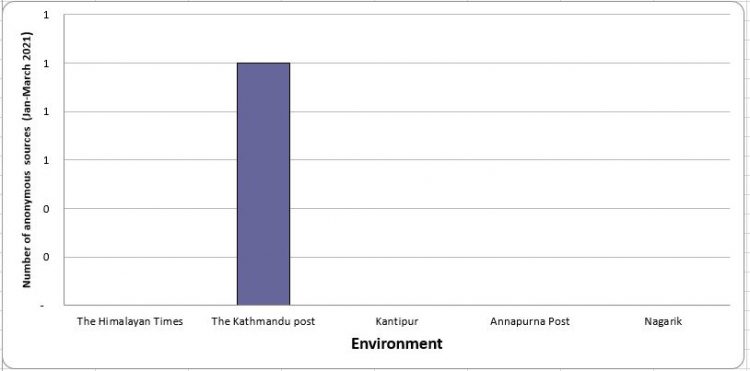
Health is the second topic in the Nepali newspapers where anonymous sources were used in highest numbers. During this period, anonymous sources were used in 64 instances in health-related news reports in the five newspapers.
Quoting anonymous sources in news reports is not an abnormal practice. Regarding the use of anonymous sources in news reports, ‘Journalist’s Code of Conduct, 2016 (first amendment 2019)’ issued by the Nepal Press Council states the following:
“Source should be quoted for the reliability of the news. However, while quoting the source, the name and identity of such source should be kept confidential so as to avoid any serious damage to the source.”
The identity of news source should be protected only if revealing the source’s identity can cause serious harm to him/her.
But some news reports published during this period have quoted anonymous sources even when there is no apparent need to do so.
For example, a report headlined “’Covishield vaccine’ suitable for Nepal” published in a Nepali-language daily stated, “‘The vaccine’s main feature is that it can be stored in 2-8 degree Celsius,’ an office bearer of the government committee formed to procure COVID-19 vaccines said, adding, ‘Since we have been using Serum Institute’s other vaccines for a long time, we are familiar with its reliability.'”
Another report headlined ‘How the next process begins’ published in a Nepali-language daily states : “According to a legal expert, ‘There are several unclear provisions in the Constitution and with attempts to use on one’s favor the way ahead is not clear.'”
Likewise, a report headlined ‘Let’s cooperate in Government and Election’ published in a Nepali-language daily states: “A source said now Janata Samajbadi Party (JSP) has been receiving proposal for coalition government from both the CPN-UML and the Maoist Centre.” Above mentioned news sources appear unjustified because disclosing the source’s identities do not seem to cause serious harm to him/her.
Click here to download the spreadsheet of anonymous sources statistics prepared by South Asia Check.
This material is copyrighted but may be used for any purpose by giving due credit to southasiacheck.org.
Comments
Latest Stories
- In Public Interest Covid-19 cases are low, but that’s not an excuse to avoid vaccination
- In Public Interest What is BF.7, the sub-variant that has the world by its grip?
- In Public Interest Threat of a new Covid-19 wave looms large amid vaccine shortage in Nepal
- In Public Interest As cases decline, Covid-19 test centres in Kathmandu are desolate lot
- In Public Interest Dengue test fee disparity has patients wondering if they’re being cheated
- In Public Interest As dengue rages on, confusion galore about what it is and what its symptoms are. Here’s what you need to know
In Public Interest
 Covid-19 cases are low, but that’s not an excuse to avoid vaccination
The Pfizer-BioNTech bivalent vaccines authorised by the Nepal Government provide better protection a...
Read More
Covid-19 cases are low, but that’s not an excuse to avoid vaccination
The Pfizer-BioNTech bivalent vaccines authorised by the Nepal Government provide better protection a...
Read More
- What is BF.7, the sub-variant that has the world by its grip?
- Threat of a new Covid-19 wave looms large amid vaccine shortage in Nepal
- As cases decline, Covid-19 test centres in Kathmandu are desolate lot
- Dengue test fee disparity has patients wondering if they’re being cheated
- As dengue rages on, confusion galore about what it is and what its symptoms are. Here’s what you need to know